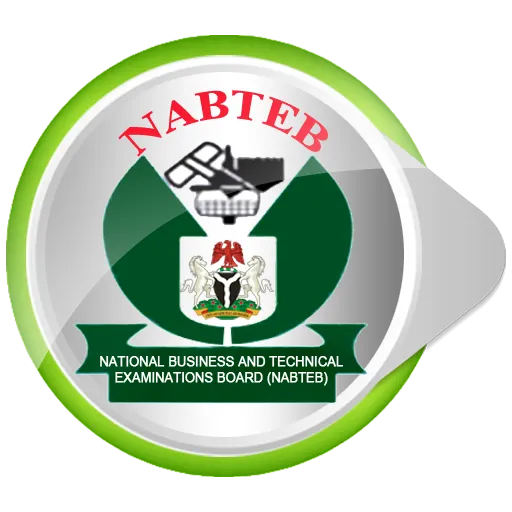NABTEB Chemistry Questions and Answers for Students and Teachers
NABTEB Chemistry questions serve as an important component in assessing the proficiency of students pursuing technical and vocational education in Nigeria.

Integral to NABTEB, these questions assess students’ comprehension and ability to apply fundamental chemical principles.
Moving forward, we will furnish you with past NABTEB Chemistry questions alongside their corresponding answers.
NABTEB Chemistry Questions and Answers
QUESTION 1
1ai. An experiment showed that 16.25g of iron chloride was obtained from the combination of 5.6g of iron with chlorine. What is the formula of iron chloride? (fe=56, CL=35.5).
ii. Sulphur is soluble in ethanol but not in water while sodium chloride is soluble in water but not in ethanol. Describe how you will separate sodium chloride from a mixture of sulphur and sodium chloride.
Solution
b. Add water to the mixture to dissolve the sodium chloride. Filter to obtain the sodium
chloride as the filtrate.
Evaporate the filtrate and the sodium Chloride solid is left behind in the evaporation dish. Put the sulphur residue in filter paper and allow it to dry.
QUESTION 2
a. Define each of the following terms.
1. Electrolysis
2. Electrolytes
3. Electrodes
b. Differentiate between true electrolytes and Potential electrolytes.
c. Explain the terms ENDOTHERMIC reaction and EXOTHERMIC reaction
Solutions for Electrolysis, Electrolytes and Electrodes
1. Electrolysis is the chemical decomposition of a compound due to the passage of electricity
through its solution or molten state.
2. Electrolytes are substances in a solution or molten state that permit the passage of electricity to
undergo chemical decomposition.
3. Electrodes are solid conducts (metals or semi-metal) through which electricity passes into or
out of an electrolyte during electrolysis.
Solution electrolytes and Potential electrolytes
(ci) True Electrolytes are compounds that in a solution or molten state will conduct electricity and
decompose during the process.
(ii) Potential Electrolytes are compounds that are not conductors unless they react with another
compound- (e.g. polar solvent), before conducting electricity and decomposing.
Solution Endothermic reaction and Exothermic reaction
i. Endothermic reaction is a chemical reaction in which heat is absolved from the atom sphere or
surroundings. An endothermic reaction is a chemical reaction that requires heat from the atmosphere to take place.
ii. Exothermic reaction is a chemical reaction that produces heat in the atmosphere.
QUESTION 3
(a) Define and give an example of each of the following:
i. Acid salt
ii. Basicity of an acid
iii.Deliquescent substance
iv. Double salt
v.Efflorescent substances
vi. Hygroscopic substance
Solution
Acid salt is a compound made up of a metallic cation and a non-metallic anion which dissolves in water to
produce a weak acid E.g. KHS04, Ca (HS04)2.
ii. The basicity of acid is the number of hydrogen ions, 1 molecule of it can be produced in a solution or molten state.
e.g., Basicity of HN03 = 1, H2SO4=2, H3PO4=3 , HCL = 1.
iii. Deliquescent substance is that matter absorbs water moisture, from the atmosphere to form a solution at the end Examples include:
a. Sodium hydroxide pellets.
b. Iron (II) Chloride crystals
c. Calcium chloride (fused)
d. Magnesium chloride
e. Phosphorous (v) oxide
iv. Double salt is that which ionized to produce three different types of ions in solution
E.g. NaNH4SO4, Kmn04
v. Efflorescent substance is that crystal that forms one or more (some) molecules of water of
crystallization when exposed to the atmosphere.
vi. Hygroscopic substances are substances that absorb moisture from the atmosphere but do not dissolve in them.
QUESTION 4
5a. List four factors that can alter the rate of a chemical reaction.
Solution
(i) Nature of the reactants
(ii) Concentration/pressure ( for gases) of the reactant
(iii) Surface area of reactants.
(iv) Temperature of the reaction mixture
(v) Presence of light
QUESTION 5
8a. What is an Atom?
8b. Explain briefly the following terms using an example to illustrate each.
Solution
a. An atom is the smallest unit/representative/particle of matter made up of electrons, protons, and neutrons.
8b. Explain briefly the following terms using an example to illustrate each.
i. Atomic mass number
ii. Nuclear charge
iii. Valency
iv. Isotopy
Solution
8bi. The atomic mass number is the sum of protons and neutrons in an atom e.g. chlorine which has
17 protons and 18 neutrons have a mass of 35.
ii. Nuclear charge is the sum of proton charges in the nucleus. Na has 11 protons; its nuclear
charge is (l).
iii. Valency is the combined power of an atom when it reacts with another to form a bond.
iv. Isotopy is the occurrence of two or more atoms of an element with different numbers of neutrons or atomic mass numbers. e.g. carbon, oxygen, chlorine, etc.
QUESTION 6
9ai. State the second law of thermodynamics
ii. Give THREE conditions for a chemical change to occur spontaneously.
Solution
i. The second law of thermodynamics states that a spontaneous process occurs only if there is an increase in entropy of the system and the surroundings.
ii. Total entropy change must be positive i.e. DS (total) >0 free energy of the system must be negative i.e. DG< 0. The transition Energy complex must be reached.
Success in the NABTEB Chemistry exam requires a combination of theoretical knowledge and practical skills.
Understanding the key topics, practicing regularly, and honing your laboratory skills will empower you to approach the exam with confidence.
